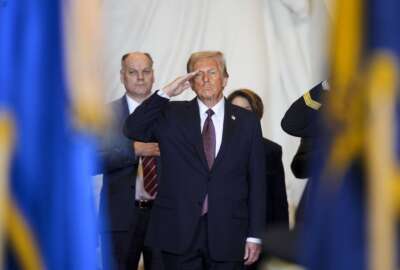Implications of telework abuse continue to plague USPTO
A Commerce Department Inspector General report revealed that the U.S. Patent and Trademark Office paid $18.3 million over a 15-month period to employees who may...
The U.S. Patent and Trademark Office is examining its telework policies and processes after a Commerce Department Inspector General report revealed that the agency paid $18.3 million over a 15-month period to employees who may have falsely reported their time and attendance.
The OIG examined the reported work-hour data of 94 percent (8,400) of USPTO patent examiners, and compared them to the digital footprints of those employees between Aug. 10, 2014 and Nov. 28, 2015. It found 288,479 hours where employee activity could not be verified.
“The USPTO recognizes that there may be many reasons for the lack of a digital footprint and is committed to analyzing the recommendations offered by the OIG, continuing to conduct our own review, and, if needed, improving the extensive measures already implemented,” USPTO Chief Communications Officer Patrick Ross said in an Aug. 31 statement.
About 400 employees each had a minimum of 10 percent of their hours unsupported, accounting for 43 percent of the agency’s total unverifiable hours.
The OIG report noted that the agency’s policies were at least partially to blame for the inability to account for these hours. According to the OIG, USPTO does not require employees to log into their computers while teleworking if they do not telework full time. It only requires poor performers to submit work schedules to supervisors, despite the fact that the majority of examiners with unsupported hours received average or better performance reviews.
About 300 of those 400 employees received above-average performance reviews. They were responsible for almost 98,000 unsupported hours.
In addition, those 400 employees received about $7.8 million in bonuses.
The OIG report also suggested that the USPTO’s standards for employee performance may be out of date and too low.
“These findings suggest that those examiners met — or even exceeded — their performance goals by completing their work assignments in less time than allotted by their production goals,” the report said. “This, in turn, calls into question the adequacy of those production goals and suggests that a potential abuse of time is possible because the production goals for many of the art units do not reflect efficiencies in work processes. The findings also suggest that USPTO is paying production bonuses to examiners who are possibly defrauding the agency.”
The report suggested that while USPTO assumed 20 hours of work per examination, examiners might be completing the work faster than that, but still billing the full time. It put forth a hypothetical situation, wherein an employee completed examinations in 15 hours, accomplishing the total required amount of work in 65 hours, but billed the full 80.
And because 28.5 percent of the total unsupported time was overtime hours, the report also suggested a situation in which an employee completed five patent examinations in 80 hours, but proceeded to bill a full 100 to the agency. The appearance of putting in extra work would then lead to better performance reviews and bonuses on top of overtime pay.
The report also found that because examiners were required to turn in their work on a quarterly basis, unsupported hours also followed quarterly peaks. These peaks all occurred in the month immediately following a production target.
The OIG report did note that after the February 2015 implementation of USPTO’s new telework policy, the prevalence of unsupported hours fell.
The OIG made six recommendations to USPTO, including reexamining production goals, requiring all examiners to provide their supervisors with work schedules, and requiring them to be logged into the network at all times while teleworking.
The report did acknowledge that there is no way of verifying how much time telework employees spent working offline, and that this could account for some of the unsupported time.
It did repeatedly state that it gave employees the benefit of the doubt wherever possible, and used the most conservative estimates possible.
“The OIG generally interpreted the data in the light most favorable to the employees,” the report said.
This report comes a little more than a year after the National Academy of Public Administration reviewed USPTO’s telework program and released a report that said abuses like these were neither widespread nor unique to teleworkers.
“There is no evidence that off-site workers are more likely to commit [time-and-attendance] abuse,” it concluded.
USPTO has been dealing with allegations of time-and-attendance fraud since 2012, when complaints of incomplete work and falsely reported overtime, among other issues, led to congressional hearings, oversight and the commissioning of the NAPA study.
Copyright © 2025 Federal News Network. All rights reserved. This website is not intended for users located within the European Economic Area.
Daisy Thornton is Federal News Network’s digital managing editor. In addition to her editing responsibilities, she covers federal management, workforce and technology issues. She is also the commentary editor; email her your letters to the editor and pitches for contributed bylines.
Follow @dthorntonWFED






